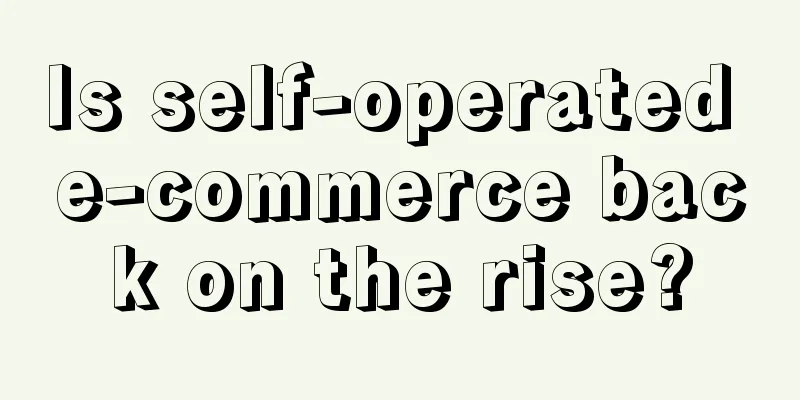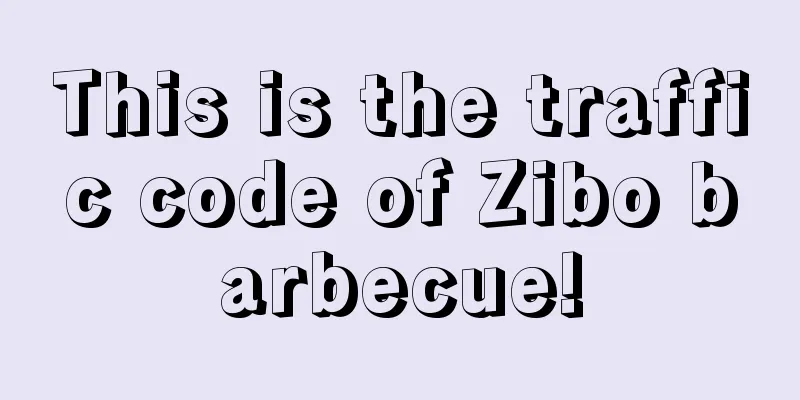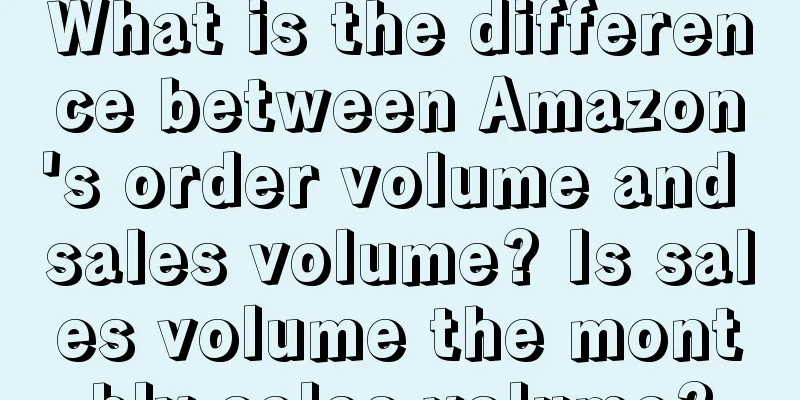How to build user tags to facilitate precision marketing

Everyone who has experienced it knows that rough operation can no longer meet the needs of the retention era. What we want is to reduce costs, improve efficiency, and fine-tune user stratification operations. But to achieve this, a good user tag system is essential. Today, this article will first tell you "How to build user tags to help precision marketing." 01 What are user tags?Because I always show off my affection in my Moments, my friends call me a "wife-showing maniac"; because I go back to visit my mother-in-law every month, my friends call me the "best son-in-law"; because I often post home-cooked meals in my Moments, my friends say I am a "househusband"; these are the labels that others have given me, and they use these labels to remember and describe me as a person; In our Internet products, we also need to label users. The clearer our labels are, the more we can visualize users, know all about the bad guys and bad girls, and achieve differentiated and personalized operations. However, to achieve this differentiated goal, we need to analyze and refine the business data, behavior data, log data, etc. generated by users on the platform to generate adjectives with differentiated characteristics, and then classify and integrate them into labels. It can be simply summarized as: what user did what behavior through the platform, at what time and in what scenario? We extract these through point recording to form visual information to support business implementation. User tags can exist in many forms, such as natural attributes of users, statistical indicators of user transactions and asset data, tags predicted based on certain rules, life cycle tags, user value tags, user preferences, etc. We can gradually improve our tag library based on business goals and strategies. I agree with an author's point of view that a good label needs to have the following four characteristics:
02 Why do we need user tags?Have you ever encountered such a problem: there are millions of registered users, but the platform only divides them into a few simple membership levels. All activities are platform-wide activities, and they are basically carried out in a few aspects such as attracting new users, promoting activation, retaining existing users, recalling users, and high-value users. In the early stage, we can only rely on partial user data and use Excel spreadsheets to screen users, group users, and carry out some simple activity push and community services based on registration time, asset investment status, and withdrawal status. This greatly reduces work efficiency and makes it impossible to achieve accurate operational promotions, especially since user tags are often dynamic. If they are pushed blindly and exposed without purpose, the money may not only be wasted but also have little effect and disturb the users. Amazon CEO Jeff Bezos once said his dream, "If I had a million users, I would build a million different websites!" The basis for this is to tag users first. You can understand that the best scenario for user tagging is the recommendation system. User tags are the basis of refined operations, which can effectively improve the distribution efficiency and conversion efficiency of traffic and save our operating costs. The previous article "5 Steps to Teach You How to Recall Lost Users" also used the tag system to help us effectively recall lost users. Through the tag system, users and content, users and scenarios, users and products can be connected in a personalized, precise and effective manner, thereby attracting potential customers, increasing user activity, improving marketing reach, reducing user interruptions, improving customer experience, reducing marketing costs, and ultimately maximizing user value. When we operate an event, the core issue of our operation push is: when, to which users, what products and content to push, that is, push according to different needs. Because we did not have a label system before, we often used full push. Our project is mainly operated by existing members, and the product life cycle is in the mature stage, so we will pursue more refined operations for users than other companies. We use various means to extend the user life cycle, promote user activity and conversion, and do everything possible to generate commercial value. The first step to do a good job in precision operation is to better understand our users, identify the various characteristics of our users, and build a complete, accurate, and dynamic label system to achieve accurate push, personalized marketing, etc., to achieve value growth for all users. 03 Understand the mainstream label framework(1) User tag system based on marketing touchpoints It first divides users into different marketing stages, and then determines what needs to be done and what labels are needed to attract fans at each stage. For example, Alibaba divides the user's brand recognition stage into four stages: perception, interest, purchase, and loyalty, and then creates segmentation labels based on the marketing actions to be done in these four stages. (2) Based on the growth funnel AARRR model The most basic funnel model, no matter what kind of user, will definitely belong to one of the stages. Combined with our product life cycle theory, different operation strategies are formulated according to users at different stages. (User stage label) (3) User Value Hierarchy Model You can search for the popular science of RFM on the Internet by yourself, so I will not elaborate here. For the product, the users with the highest value are those with high spending amounts and high frequency, and the users with the lowest value are those with the lowest spending amounts and low frequency. Here we can divide it into 8 category labels. (4) Model based on user preference We infer users' interests and preferences through their behaviors, and recommend products and activities that meet their interests. We will classify and label product activities, and then make a user preference model based on user behaviors including clicks, purchases, reading, comments, and sharing. 04 How to produce more comprehensive labels?1. Business reviewThe first step in building a user tag system is to sort out the user experience map and restore the business process. We need to identify the business goals we want, break down the goals, and develop personalized operational strategies. Taking a financial management platform as an example, we will funnel out the business process (covering the entire user life cycle), which are channel sources, app downloads, registration and login, active browsing, real-name card binding, investment/loan (product preferences, activity preferences), user repurchase, user withdrawals, user churn, etc. to build our tag system, and then apply the tag combination to our operational strategy. 2. Tag classificationGenerally, tags can be divided into static tags and dynamic tags according to their timeliness. As the name implies:
We can also divide data extraction into: fact labels, statistical labels, and model labels.
A complete labeling system covers the above three categories of labels in terms of label types. From a business perspective, it also needs to cover the four dimensions of life cycle, user value, active characteristics, and user preferences . 1) Lifecycle label Such as new users, first-time users, loyal users, silent users, churned users...refers to the user's life cycle stage within the product. It can clearly identify the user's life cycle stage and grasp user characteristics and operational priorities. 2) User value label Such as high-value users, RFM user stratification...refers to the user's consumption characteristics and commercial value within the product, which can guide the user's differentiated operational investment and strategic methods. 3) Active feature labels Such as users who are sensitive to big promotions and active users at night... refer to the user's behavior, time, channel and other characteristics when using the product. They can assist in the selection of operation timing scenarios and the design of operation strategy methods, but the premise is that we must have a clear definition. 4) User preference tags For example, preferences for financial products and delivery products can support the judgment of user needs and tendencies, and conduct targeted operations to improve conversion effects. Based on the tag definition type and business perspective dimension, we gradually enrich the tags, continuously improve them in combination with actual business, gradually build a complete user tag system, and continuously empower the business. Based on the above labels and combined with our financial business, I divide it into the following types: User tags usually come from user's natural attributes, user transaction data, user asset data, and user behavior characteristics:
(User tag classification) Regardless of the type of label, it summarizes user information by describing and characterizing a certain dimension of the user. It can be a specific text, a statistical indicator, or a key date... As long as the business personnel using it can quickly obtain information, it is an effective user label. 3. Label productionAccording to the above four categories, the four first-level labels are divided into second-level and third-level labels (establish rules), and the situations covering all users are listed in detail (especially churn warning and recall after churn). Although the method is stupid, it works. Divide the labels into one to four categories, and explain label definition (basic label - model label - prediction label), label production (manual labeling, rule labeling), label update (automatic update, manual update), label query (label query, label statistics), label management (add, edit, disable), etc. 05 Simple application of label systemUser portrait: It is an important tool for understanding users. It can help business personnel quickly understand user characteristics and guide product iteration, operation activity strategy, etc. Precision marketing: users are divided into finer granularity through multiple dimensions, and users are reached through SMS, push, email, etc. It is applied in activities, user care, recall, incentive and other strategies, which saves costs and has good results. Data analysis: Generally, the company's BI platform will be connected with these data, and various tags will be used to perform segmentation and drill-down analysis in different dimensions during data analysis, so as to conduct more in-depth comparative analysis. Recommendation system: Based on user tags, personalized recommendations are made to users to achieve personalized content for each user. For example, personalized advertising display can improve the click-through rate of advertisements. 06 Others1. Archive, maintain and update the label system information: the specific rules, update logic, update cycle, business party, etc. of each label in the label system. Keep clear archive records to facilitate subsequent maintenance and update. 2. After the labels are established, the business side needs to continuously verify whether they are reasonable and effective. Continuously optimize and iterate to continuously process the fact labels into model labels and strategy labels that meet the needs. Unused or invalid labels should be cleaned up in a timely manner. The above is welcome to communicate. |
>>: Merchants who have successfully run group buying on Douyin are now taking advantage of Kuaishou
Recommend
Letter to the boss: Category domination is the ultimate goal of Xiaohongshu's operation
The author of this article talks about how to occu...
Two ads received over 1 million likes. He is the hit-making machine of 2023
How to get traffic, produce popular videos, create...
What are the reasons for Amazon's layoffs? What is Amazon's current situation?
Amazon is now constantly making news about layoffs...
What products are suitable for small Amazon sellers to sell? Why does Amazon not recommend selling mobile phone cases?
On Amazon, the world's largest e-commerce plat...
Alibaba International Station adds new compliance rules for cosmetics products
Alibaba International Station pays attention to th...
Why I think Lei Jun will launch a 99,000 yuan "Redmi car"
In the past two days, Lei Jun launched the Xiaomi ...
The second half of the skit: The giants come on stage and start the "hundred-dollar war"
Under the wave of mobile Internet, the short drama...
Which cross-border e-commerce platform allows individuals to open a store? How to choose?
Many people want to do cross-border e-commerce, bu...
How to collect payment in Wish's no-source model? What are the models?
Now many friends will choose to do no-source busin...
A brief history of CEO live streaming in China
The birth of the Internet PR industry is closely r...
Is it easy to do e-commerce on Amazon now? Detailed answer
For e-commerce, you can consider domestic platform...
Is it easy to get Spring Festival red envelopes from various Internet platforms this year?
The New Year is coming, and collecting cards is go...
How Xiaohongshu improves advertising effectiveness through competitive product analysis
Competitive product analysis is a very useful meth...
A comprehensive review of Xiaohongshu’s 11 strategies. How should new merchants choose?
It turns out that there are so many ways to play o...
Taobao opens up a "new route" to overseas markets, with some clothing sellers earning an extra 200,000 yuan a week
Taobao launched a global free shipping plan for cl...









